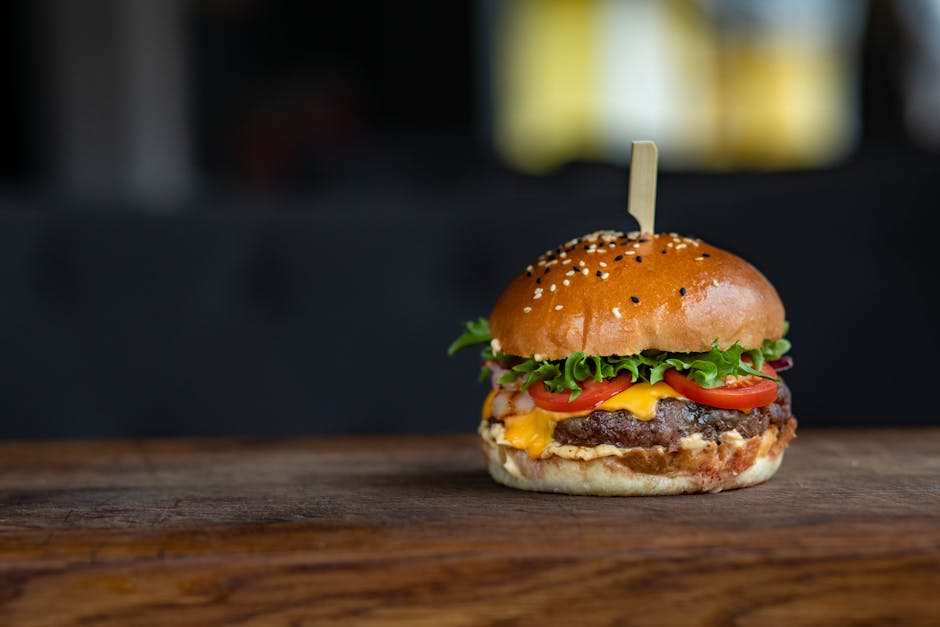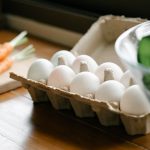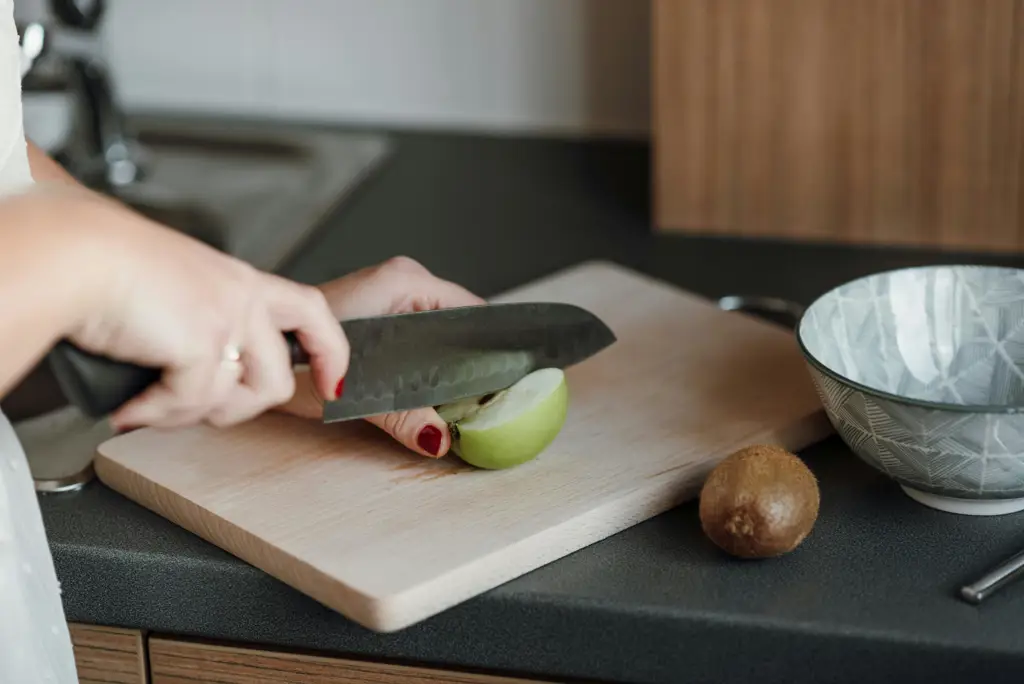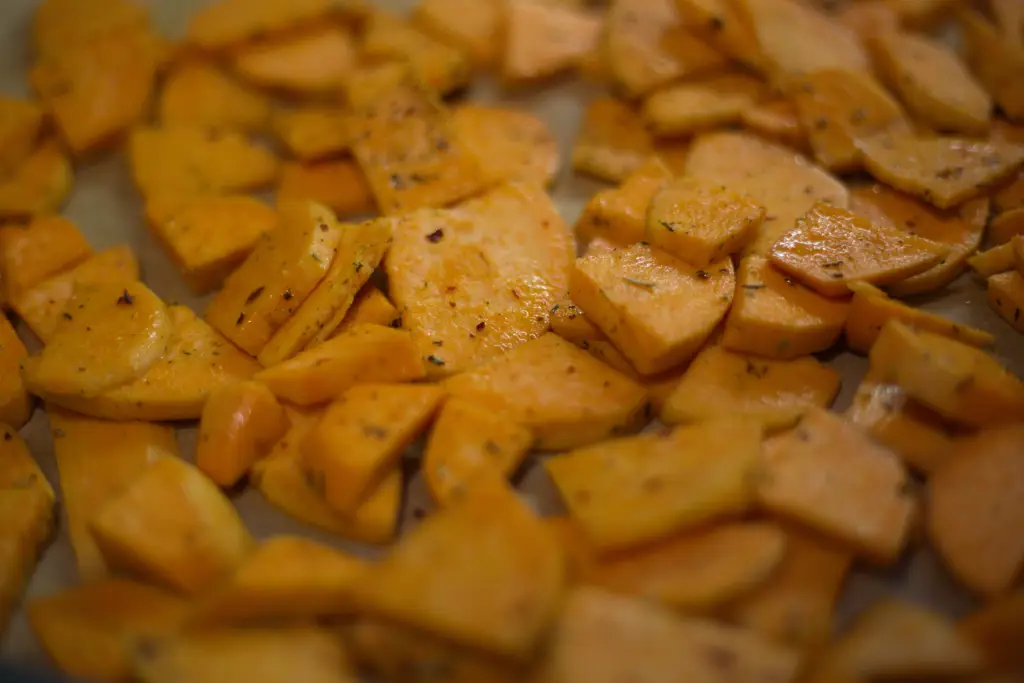The humble burger, a culinary cornerstone of American culture, has undergone a fascinating evolution, particularly in recent years with the rise of veganism. While the classic beef burger traces its origins back to late 19th-century Hamburg, Germany, and its popularization in the United States through various iterations, the vegan burger represents a distinct and significant chapter in this story. Its emergence reflects not only changing dietary preferences but also a growing awareness of environmental and ethical concerns surrounding meat production. The demand for plant-based alternatives has exploded, with the global vegan meat market predicted to reach billions of dollars in the coming years. This burgeoning market is driven by a combination of factors, including health concerns, environmental sustainability, and ethical objections to animal agriculture.
Historically, vegetarian and vegan alternatives were often limited to bland and unappealing imitations. However, recent advancements in food technology have resulted in increasingly sophisticated and flavorful plant-based patties that rival their meat-based counterparts in texture and taste. This homemade vegan burger recipe exemplifies this progress, showcasing how readily available ingredients can be transformed into a satisfying and delicious meal. The cultural significance of this dish lies in its ability to bridge the gap between traditional culinary expectations and modern values. It demonstrates that delicious and fulfilling meals can be created without compromising ethical or environmental considerations. The growing popularity of vegan burgers highlights a shift towards a more conscious and inclusive approach to food choices.
Interestingly, studies show that a significant portion of the population is actively reducing their meat consumption, with many adopting flexitarian diets that incorporate meat sparingly. This trend contributes to the increasing demand for high-quality vegan alternatives. The homemade aspect of this recipe further emphasizes a growing interest in food provenance and the desire to control the ingredients and preparation methods. Unlike commercially produced vegan burgers, which can contain a myriad of processed ingredients, this recipe focuses on simple, whole-food components, allowing for greater transparency and control over the nutritional content. This empowers individuals to create a healthier and more sustainable meal tailored to their preferences, ultimately contributing to a broader movement towards mindful eating.
Beyond the individual benefits, the adoption of plant-based diets, and the corresponding rise of vegan burgers, holds significant implications for environmental sustainability. Livestock farming is a major contributor to greenhouse gas emissions, deforestation, and water pollution. By opting for a vegan burger, individuals contribute to a reduction in their environmental footprint. This homemade recipe offers a delicious and accessible way to participate in this positive change, promoting a more sustainable and ethical food system. The increasing availability and affordability of plant-based ingredients, coupled with the growing culinary sophistication of vegan cuisine, suggest that the homemade vegan burger is not just a passing trend, but a permanent fixture in the evolving landscape of modern gastronomy.
Ingredients and Measurements
Creating the perfect homemade vegan burger requires careful attention to ingredient selection and precise measurements. The following list details each component, along with recommended quantities for approximately 4 large patties. Feel free to adjust these based on your desired patty size and personal preferences. Remember to use fresh, high-quality ingredients for the best flavor and texture.
For the Burger Patties:
- 1 cup (120g) cooked brown or black lentils: Using cooked lentils ensures a good binding agent and adds a hearty texture. Ensure your lentils are well-drained before incorporating them into the mixture. Overly wet lentils will result in mushy patties.
- 1/2 cup (60g) cooked quinoa: Quinoa adds a slightly nutty flavor and extra protein to the patties. Cook the quinoa according to package directions, ensuring it’s fluffy and not overly sticky.
- 1/2 cup (70g) finely chopped walnuts or pecans: Nuts contribute a wonderful richness and satisfying texture to the burger. Finely chopping the nuts is crucial for even distribution and preventing large chunks in the patties.
- 1/4 cup (30g) finely chopped onion: Onion adds a savory depth of flavor. Using finely chopped onion ensures it doesn’t overpower the other ingredients, and distributes evenly throughout the patties.
- 2 cloves garlic, minced: Garlic provides a pungent aroma and enhances the overall flavor profile. Fresh garlic is highly recommended for the best taste.
- 1/4 cup (60ml) bread crumbs (panko recommended): Breadcrumbs act as a binder, helping to hold the patties together. Panko breadcrumbs create a lighter, crispier texture compared to regular breadcrumbs.
- 2 tablespoons (30ml) nutritional yeast: Nutritional yeast imparts a cheesy flavor, adding a delicious umami note. Adjust the amount according to your preference for cheesiness.
- 1 tablespoon (15ml) soy sauce or tamari (for gluten-free): Soy sauce adds saltiness and depth of flavor. Tamari is a gluten-free alternative if needed.
- 1 teaspoon smoked paprika: Smoked paprika provides a smoky flavor that complements the other ingredients well.
- 1/2 teaspoon ground cumin: Cumin adds a warm, earthy flavor.
- 1/4 teaspoon black pepper: Black pepper adds a subtle spice and enhances the overall flavor.
- 2 tablespoons (30ml) olive oil: Olive oil helps to bind the ingredients and adds moisture. Use a high-quality olive oil for the best results.
For Serving (optional):
- Burger buns
- Lettuce
- Tomato
- Onion
- Vegan cheese slices
- Your favorite vegan burger sauce or condiments
Important Note: These measurements are guidelines. You might need to adjust the amount of breadcrumbs depending on the moisture content of your lentils and quinoa. If the mixture is too wet, add more breadcrumbs, a tablespoon at a time, until it holds its shape well.
Preparation of the Vegan Patty
Creating delicious vegan patties requires careful attention to texture and flavor. This recipe yields approximately 4 large patties, perfect for four generous burgers. Let’s begin!
First, we’ll prepare the base of our patties. In a large bowl, combine 1 cup cooked brown or black lentils (rinsed well), 1/2 cup cooked quinoa (also rinsed), and 1/2 cup finely chopped mushrooms. Brown or black lentils offer a rich, earthy flavor and hold their shape well, while quinoa adds a delightful texture and nutritional boost. The mushrooms provide an umami depth that mimics the savory richness of ground meat.
Next, we’ll add the binding agents and seasonings. Incorporate 1/4 cup bread crumbs (panko recommended for a crispier patty), 1 tablespoon nutritional yeast (for a cheesy flavor), 1 tablespoon soy sauce or tamari (for saltiness and umami), 1 teaspoon garlic powder, 1 teaspoon onion powder, 1/2 teaspoon smoked paprika, and 1/4 teaspoon black pepper. The bread crumbs are crucial for holding the patty together, while the nutritional yeast and soy sauce contribute significantly to the overall flavor profile. The spices add warmth and complexity.
Thoroughly mix all the ingredients using your hands or a large spoon until everything is evenly combined. This step is vital for achieving a uniform texture and preventing dry or crumbly patties. If the mixture seems too dry, add 1-2 tablespoons of water, a tablespoon at a time, until you reach a consistency that holds its shape but is still slightly moist. Too much moisture will result in mushy patties, while too little will make them difficult to handle.
Once the mixture is well combined, gently form it into four equal-sized patties, approximately 1/2 inch thick. Avoid pressing the patties too firmly, as this can lead to dense, hard patties. Aim for a slightly loose consistency to allow for even cooking and a tender interior.
Optional: For an extra crispy exterior, you can lightly coat the patties in a small amount of olive oil or vegan butter before cooking. This step is not strictly necessary, but it does enhance the browning and crispiness of the patties.
Now you’re ready to cook your delicious vegan patties! You can pan-fry them in a lightly oiled skillet over medium heat for about 4-5 minutes per side, or bake them in a preheated oven at 375°F (190°C) for 20-25 minutes, flipping halfway through. Cooking time may vary depending on the thickness of your patties and your cooking method. Ensure the patties are cooked through and heated thoroughly before serving.
Pro Tip: For perfectly formed patties, use a burger ring or cookie cutter to ensure even size and shape. This also helps maintain the patty’s integrity during cooking.
Preparing the Burger Buns (if making from scratch)
Making your own burger buns elevates the homemade vegan burger experience to a whole new level. While store-bought buns are convenient, nothing beats the taste and texture of freshly baked, perfectly soft buns made from scratch. This recipe yields approximately 8 burger buns.
Ingredients:
- 1 cup warm water (105-115°F)
- 2 ¼ teaspoons (1 packet) active dry yeast
- 1 tablespoon granulated sugar
- 2 tablespoons olive oil
- 3 cups all-purpose flour, plus more for dusting
- 1 teaspoon salt
- ½ cup unsweetened applesauce (for extra moisture and sweetness)
- 1 tablespoon flaxseed meal mixed with 3 tablespoons water (flax egg for binding)
Instructions:
Step 1: Activate the Yeast: In a large bowl, combine the warm water, yeast, and sugar. Let stand for 5-10 minutes until foamy. This ensures your yeast is alive and active, crucial for a good rise. If the yeast doesn’t foam, it’s likely dead and you’ll need to start again with fresh yeast.
Step 2: Combine Wet Ingredients: Once the yeast is foamy, stir in the olive oil and applesauce. The applesauce adds moisture and a subtle sweetness that complements the savory burger. Ensure the applesauce is well incorporated.
Step 3: Incorporate Dry Ingredients: In a separate bowl, whisk together the flour and salt. Gradually add the dry ingredients to the wet ingredients, mixing with a wooden spoon or your hands until a shaggy dough forms. Do not overmix at this stage.
Step 4: Add Flax Egg: Stir in the flax egg. This acts as a binder, helping the buns hold their shape and adding a slightly nutty flavor. Make sure the flax egg is fully mixed in.
Step 5: Knead the Dough: Turn the dough out onto a lightly floured surface and knead for 5-7 minutes, or until the dough is smooth and elastic. If the dough is too sticky, add a little more flour, a tablespoon at a time.
Step 6: First Rise: Place the dough in a lightly oiled bowl, turning to coat. Cover the bowl with plastic wrap and let rise in a warm place for 1-1.5 hours, or until doubled in size. A warm oven (with the light on) is a great place for rising.
Step 7: Shape the Buns: Punch down the dough to release the air. Divide the dough into 8 equal portions. Shape each portion into a smooth ball. Place the buns on a baking sheet lined with parchment paper, leaving some space between them.
Step 8: Second Rise: Cover the shaped buns loosely with plastic wrap and let rise for another 30-45 minutes, or until almost doubled in size. This second rise is crucial for a soft texture.
Step 9: Bake: Preheat your oven to 375°F (190°C). Bake the buns for 18-20 minutes, or until golden brown. Keep an eye on them to prevent burning.
Step 10: Cool: Let the buns cool completely on a wire rack before serving. Cooling prevents them from becoming soggy.
Enjoy your homemade vegan burger buns! They are best served fresh, but can be stored in an airtight container at room temperature for up to 2 days or frozen for longer storage.
Cooking the Vegan Patty (e.g., pan-frying, grilling)
Cooking your homemade vegan patty perfectly is key to achieving a delicious and satisfying burger experience. The method you choose – pan-frying, grilling, or even baking – will impact the texture and flavor of your patty. This section focuses on pan-frying and grilling, two popular and effective methods.
Pan-frying offers a great balance of convenience and control. For this method, you’ll need a large non-stick skillet or frying pan. Heat 1 tablespoon of oil (such as olive oil, avocado oil, or coconut oil) over medium-high heat. It’s crucial to ensure the oil is hot enough before adding the patties; otherwise, they may stick and become unevenly cooked.
Gently place your vegan patties into the hot pan, leaving a little space between each one to allow for even browning. Cook for approximately 4-5 minutes per side, or until they are golden brown and have reached an internal temperature of at least 165°F (74°C). Use a spatula to carefully flip the patties halfway through. Avoid pressing down on the patties while they cook, as this can squeeze out valuable moisture and result in a dry patty.
For extra flavor during pan-frying, consider adding a few sprigs of fresh rosemary or thyme to the pan during the last minute of cooking. This will infuse the patties with an aromatic herbal note. You can also add a splash of vegetable broth or water to the pan if the patties start to brown too quickly before the inside is cooked through. This will help steam them slightly and ensure they are cooked evenly.
Grilling your vegan patties provides a smoky char and delicious grill marks, adding another layer of flavor. Preheat your grill to medium-high heat. Lightly oil the grill grates to prevent sticking. Place the patties on the preheated grill and cook for approximately 4-5 minutes per side, or until golden brown and cooked through. Remember to use tongs to carefully flip the patties to avoid breaking them.
For best results when grilling, consider using a grill press to ensure even cooking and prevent the patties from bulging in the middle. However, be careful not to press too hard, or you risk squeezing out moisture. If you notice the patties are browning too quickly, reduce the heat slightly. Keep an eye on them throughout the cooking process to prevent burning.
Regardless of the cooking method you choose, always use a food thermometer to ensure the patties reach a safe internal temperature of 165°F (74°C). This is essential to guarantee they are fully cooked and safe to eat. Once cooked, remove the patties from the heat and let them rest for a few minutes before assembling your burger. This allows the juices to redistribute, resulting in a more tender and flavorful patty.
Experiment with different cooking methods and seasonings to find your perfect vegan patty recipe. Enjoy!
Assembling the Perfect Vegan Burger
Now that your patties are cooked to perfection and your toppings are prepped, it’s time to assemble your masterpiece! The key to a truly great vegan burger lies not just in the patty, but in the careful construction of the entire sandwich. This section will guide you through the process, ensuring your burger is both delicious and structurally sound.
Start with the bun: Lightly toast your buns for a warm, slightly crisp texture. A lightly toasted bun also helps prevent sogginess from juicy patties and toppings. You can toast them in a toaster, oven, or even on a lightly oiled skillet over medium heat for about 30 seconds per side. Use a good quality vegan bun; many options are available, from classic brioche to pretzel-style buns. Experiment to find your favorite!
Layering is key: Begin by spreading a thin layer of your chosen vegan mayonnaise or aioli (about 1-2 tablespoons) on the bottom bun. This adds flavor and helps prevent the bun from getting soggy. Next, carefully place your cooked vegan patty on top of the mayonnaise. Avoid over-handling the patty as it may crumble. If your patty is particularly juicy, consider placing a lettuce leaf underneath to act as a barrier.
Strategic topping placement: Now comes the fun part – adding your toppings! The order matters here. Think about texture and moisture levels. We recommend layering in this order: First, add your sliced tomato (about 1/2 a medium tomato, sliced), followed by crisp lettuce leaves (about 2-3 large leaves of romaine or butter lettuce). These add a refreshing crunch and some moisture. Next, add your red onion (about 1/4 of a medium red onion, thinly sliced) for a bit of bite and sharpness. Avoid over-stuffing the burger; this can make it difficult to eat and can cause it to fall apart.
Cheese (optional): If you’re using vegan cheese slices, place them on top of the patty before adding other toppings. This allows the cheese to melt slightly from the residual heat of the patty. If using crumbled vegan cheese, sprinkle it over the other toppings. Choose a vegan cheese that melts well for the best experience.
Finishing touches: Once all your toppings are in place, add another thin layer of vegan mayonnaise or aioli (about 1-2 tablespoons) to the top bun. This adds another layer of flavour and helps bind the ingredients together. Carefully place the top bun on top of your burger. Gently press down to ensure all the ingredients are nestled together nicely.
Serving suggestions: Serve your vegan burger immediately for the best taste and texture. You can serve it with a side of your favorite fries, salad, or coleslaw. Cut the burger in half for easier eating, or serve it whole depending on its size.
Pro-tip: If you’re making burgers ahead of time, assemble them without the top bun until you’re ready to serve. This will help prevent the bun from getting soggy.
Serving Suggestions
Your homemade vegan burgers are ready to be the star of the show! But how you serve them can elevate the experience from good to unforgettable. Here are a few suggestions to inspire your culinary creativity, catering to different tastes and preferences.
The Classic Burger Experience: For a truly satisfying burger, start with a toasted brioche bun (or your favorite bun). Lightly toast the cut sides for about 30 seconds per side in a dry skillet or toaster oven. This adds a delightful crunch. Spread about 1 tablespoon of vegan mayonnaise on each bun half. Place your perfectly cooked vegan burger patty (approximately 1/4 pound) on the bottom bun. Add your favorite toppings: a generous layer of crisp lettuce (about 2 large leaves, roughly chopped), a few slices of juicy tomato (about 1/2 medium tomato, thinly sliced), and a quarter of a red onion, thinly sliced for a mild bite. Finish with a few pickles (about 2-3 dill pickle slices) and another tablespoon of vegan mayonnaise on the top bun. Don’t overcrowd the burger; let each element shine.
Elevated Burger Presentation: For a more sophisticated approach, consider using artisan bread rolls instead of traditional burger buns. Ciabatta rolls or pretzel rolls offer a unique texture and flavor profile. Instead of mayonnaise, try aioli – a creamy garlic and herb sauce. You can easily make a vegan aioli by blending vegan mayonnaise with roasted garlic, fresh herbs like parsley and dill, and a squeeze of lemon juice. Experiment with gourmet toppings like caramelized onions (about 1/4 cup), roasted red peppers (about 1/4 cup, sliced), or sautéed mushrooms (about 1/2 cup, sliced and sautéed in olive oil with garlic). Consider the color contrast of your toppings for a visually appealing burger.
Beyond the Bun: Step outside the traditional burger box! Serve your patties on a bed of greens in a lettuce wrap for a low-carb option. About 4 large butter lettuce leaves are perfect for this. Top with your favorite toppings and a light vinaigrette dressing. You could also try serving your patties as sliders using mini brioche buns. This is a perfect option for parties. Use about 2-3 smaller patties per person. Think about portion sizes and adjust the number of patties accordingly.
Side Dishes to Complement: No burger is complete without the perfect side dish. Classic options include crispy fries (sweet potato fries are a delicious alternative!), a vibrant coleslaw, or a refreshing salad. Consider adding a side of creamy mashed potatoes or a flavorful potato salad for a heartier meal. Don’t forget about the drinks! A cold craft beer, a crisp white wine, or a refreshing iced tea perfectly complements a delicious vegan burger.
Remember to personalize your serving suggestion! Experiment with different toppings, buns, and sides to find your perfect vegan burger combination. Have fun with it and enjoy the delicious results of your hard work!
Homemade Vegan Burger Recommendations
This section offers comprehensive recommendations for enjoying your delicious homemade vegan burger. We’ve included serving suggestions, storage advice, and complementary dishes to enhance your culinary experience.
Serving Suggestions: To elevate your vegan burger experience, consider serving it on a toasted brioche bun with your favorite toppings. Classic choices include crisp lettuce, juicy tomato slices, thinly sliced red onion, and pickles. For a creamy addition, try vegan mayonnaise or aioli. Don’t be afraid to experiment with different toppings like caramelized onions, roasted peppers, or even a spicy slaw. For a truly gourmet burger, consider adding a flavorful vegan cheese slice, allowing it to melt slightly on the warm patty.
Storage Conditions: For optimal freshness and flavor, it’s crucial to store your homemade vegan burgers properly. Cooked burgers should be stored in an airtight container in the refrigerator for up to 3 days. If you are freezing them, place them in a freezer-safe bag or container, ensuring all air is removed. Frozen burgers can be stored for up to 3 months. When reheating, ensure the burger is thoroughly heated through to an internal temperature of 165°F (74°C) to ensure food safety. You can reheat in a pan, oven, or microwave.
Complementary Dishes: To complete your vegan burger meal, consider pairing it with some delicious sides. Classic choices include crispy potato wedges or sweet potato fries. A refreshing side salad with a light vinaigrette adds a healthy and flavorful counterpoint to the richness of the burger. For a more substantial side, try a creamy coleslaw or a vibrant quinoa salad. If you prefer something warmer, consider serving your burger alongside a hearty bowl of vegan chili or a comforting potato salad.
Nutritional Information (per serving, approximate values may vary based on ingredients used):
Calories: Approximately 450-550 calories
Protein: 20-25g
Fat: 20-25g
Carbohydrates: 40-50g
Fiber: 10-15g
Important Note: These nutritional values are estimates and can vary depending on the specific ingredients used in your recipe. For precise nutritional information, use a nutrition calculator with the exact ingredients and quantities you’ve used. Always check ingredient labels for potential allergens.
Enjoy your delicious and satisfying homemade vegan burger!





